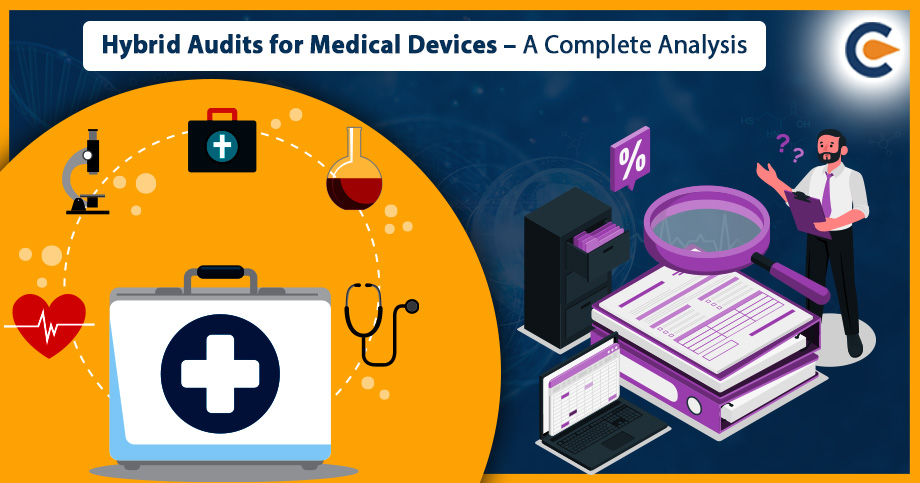A working group was established by the International Medical Device Regulators Forum (IMDRF) to create a set of standards for certification bodies (auditing organizations) that conduct regulatory audits of medical device manufacturer’s quality management systems. The rules, known as the Medical Device Single Audit Program (MDSAP), are applicable to regulatory agencies as well as independent companies that carry out such audits.
The Medical Device Single Audit Program (MDSAP), which is focused on the Quality Management System (QMS) and regulatory requirements of medical device makers, was created to jointly leverage regulatory resources and administer an efficient, effective, and long-lasting single audit program. These requirements are based on the medical devices standard ISO 13485. – Requirements for regulatory purposes, as well as the particular requirements from the medical device rules of the relevant regulatory bodies. – Quality management systems.
Recognized Auditing Organizations are permitted to undertake a single regulatory audit program of a medical device manufacturer under the MDSAP as long as it complies with all applicable requirements of the regulatory bodies taking part in the program.
What Is The MDSAP?
The goal of the MDSAP or Medical Device Single Audit Program is to create, manage, and supervise a single audit program that will enable a single regulatory audit of a medical device manufacturer to satisfy the requirements of several regulatory authorities.
The regulatory agencies that are taking part want to increase auditing firm consistency.
By adhering to the MDSAP Audit Model, the following benefits will be realized:
- Audits performed for MDSAP will be completed uniformly by auditing organizations.
- Auditors will be able to identify whether systemic quality management system nonconformities are present by conducting audits rationally, effectively, and with attention to the relationships between processes.
Importance of Medical Device Single Audit Program
The International Medical Device Regulators Forum (IMDRF) believes that a global approach to handling the inspection and verification of medical device production could enhance their security and oversight on a global level. The IMDRF designated a work group to produce specific reports for advancing a Medical Device Single Audit Program during its inaugural conference in Singapore in 2012 (MDSAP).
The Medical Device Single Audit Program enables an Auditing Organization that is recognized by MDSAP to conduct a single regulatory audit of a manufacturer of medical devices that satisfies the relevant requirements of the regulatory bodies participating in the program.
The following international organizations are participating in the MDSAP:
- TGA (Therapeutic Products Administration of Australia);
- Health Canada (Canada).
- MHLW – the Japanese Pharmaceuticals and Medical Devices Agency and the Ministry of Health, Labour and Welfare of Japan;
- FDA – the United States
The European Union (EU) and the World Health Organization (WHO) Prequalification of in Vitro Diagnostics (IVDs) Program are Official Observers.
Given the number of operations completed, an equation can be used to determine the time allotted for an audit. The most recent systems for calculating the length of an MDSAP audit have been updated by the MDSAP Consortium. As a result, the audit period may be shortened for smaller medical device makers.
The MDSAP audit is based on 13485:2016, with Australia, Canada, Japan, Brazil, and the USA included as main areas of interest and the relevant regulatory requirements of the interested authorities. The MDSAP Companion Document clearly delineates the audit work that needs to be protected and the ties to the relevant regulatory requirements for interested authority. On the US FDA website[1], click CDRH Learn to view the MDSAP audit guidance document (go to Quality Systems – Inspections – Global Harmonization). MDSAP reports are also freely available to everyone.
Single Audit Program for Medical Devices Annexes offers details on procedures, submission dates, and contract requirements. Additionally, the Medical Device Single Audit Program Council added annexes with additional information and guidance on how to evaluate conformity for each audited process, deadlines for submitting adverse event reports and advisory notices, and specifications for written contracts between manufacturers and suppliers, with references to significant clauses from the international medical device quality management standard ISO 13485:2016.
The New Annexes Are Titled As Follows:
- Audit of Product/Process Related Technology and Technical Documentation;
- Audit of Sterile Medical Device Requirements
- Conditions for Writing Agreements
- The history of the Medical Device Single Audit Program and its status as an active adoption.
The International Medical Device Regulators Forum (IMDRF), with cooperation from the relevant regulatory agencies of five countries – the US FDA, Health Canada, Australia’s TGA, Brazil’s ANVISA, and Japan’s MHLW and PMDA-developed the model for the Medical Device Single Audit Program. MDSAP certifications are most common in the US, but over the past year, regions like Brazil have witnessed steady acceptance. The specifics of adopting MDSAP across its member countries are now being worked out by the European Union.
The objective of the Medical Device Single Audit Program pilot is to offer unbiased proof that a regulatory audit of a medical device manufacturer carried out by an auditing company authorized by the MDSAP can satisfy the requirements of participating regulatory bodies.
Process of Medical Device Single Audit Program
If your organization spans multiple places, there should be a focus on a useful report on updating and sharing. (In this instance, a medical gadget and certain QMS software can really assist.) Your primary location, where the bulk of the audit will take place, will be the focus. This is any method that uses virtual manufacturers and off-site procedures. The management audit will precede the actual audits. Your management audit, procedures, quality manual, strategy, record-keeping, marketing clearances and licenses, and record control are all included in this. Examiners are interested in similar items that are included in FDA inspections or ISO audits.
A procedure-based approach is used in an MDSAP evaluation to choose tests of techniques and records to examine in light of the formation of risk management. The MDSAP Audit Model illustrates the review process. The focus of the review is on risk identification and management. In the following arrangement, this is analyzed using four crucial processes and three auxiliary techniques:
A) Management is the first crucial process that needs to be examined in order to gauge the association’s top management’s commitment to setting up and carrying out the quality administration system. The supporting process of market approval and enlisting examines the maintenance of the essential clearances, enrollments, and endorsements. In each rule, the relationship between the association and the thing acting in its favor is examined.
B) Measuring, reviewing, and improving are done right away. The methods for preventing and modifying individualities are discussed. Processes pertaining to nonconformance incidents will be highlighted for additional evaluation. Consideration is given to the supporting practice of adverse events and warning notices.
C) The structure and advancement process is examined, looking at recently installed or modified devices as well as the medical equipment linked to nonconformance incidents. The use of risk management, the exchange of structure’s yield, and progress into development are key areas of attention.
D) After that, production and administrative controls are assessed to see how they are set up and implemented.
E) The purchasing process serves as the foundation for all crucial procedures and focuses on instances of the purchase of two products and endeavors known to be connected to the riskiest types of activities, new product launches, or configuration changes. This also includes a review of the effectiveness of controls over procedures that are disseminated to outside parties.
The Global Harmonization Task Force’s reviewing mechanism is used to divide nonconformities into numerical categories ranging from 1 to 5. (GHTF). The MDSAP adopted this strongly recommended procedure of defined tasks that the assessors must do as a result of audits. It’s critical to comprehend the process and order of events that will be followed in order to effectively prepare for your audit.
Conclusion
The International Medical Device Regulators Forum (IMDRF) External Link Disclaimer acknowledges that a global strategy for auditing and monitoring medical device production could enhance their safety and oversight on a global scale. The IMDRF established a work group to provide specific papers for establishing a Medical Device Single Audit Program at its first conference in Singapore in 2012. (MDSAP). The Medical Device Single Audit Program enables an Auditing Organization authorized by MDSAP to perform a single regulatory audit of a manufacturer of medical devices that complies with the pertinent specifications of the regulatory bodies taking part in the program.
Also Read:
Medical Device Packaging – An Overview













